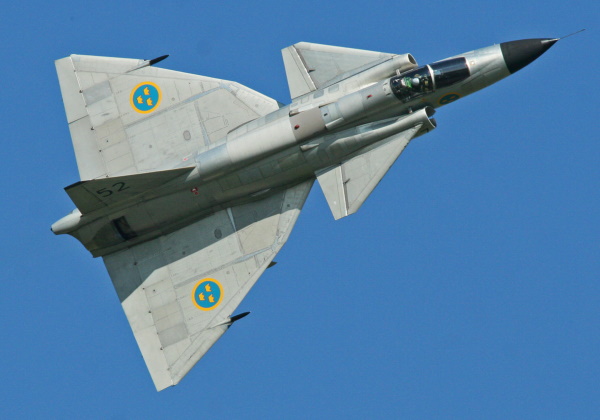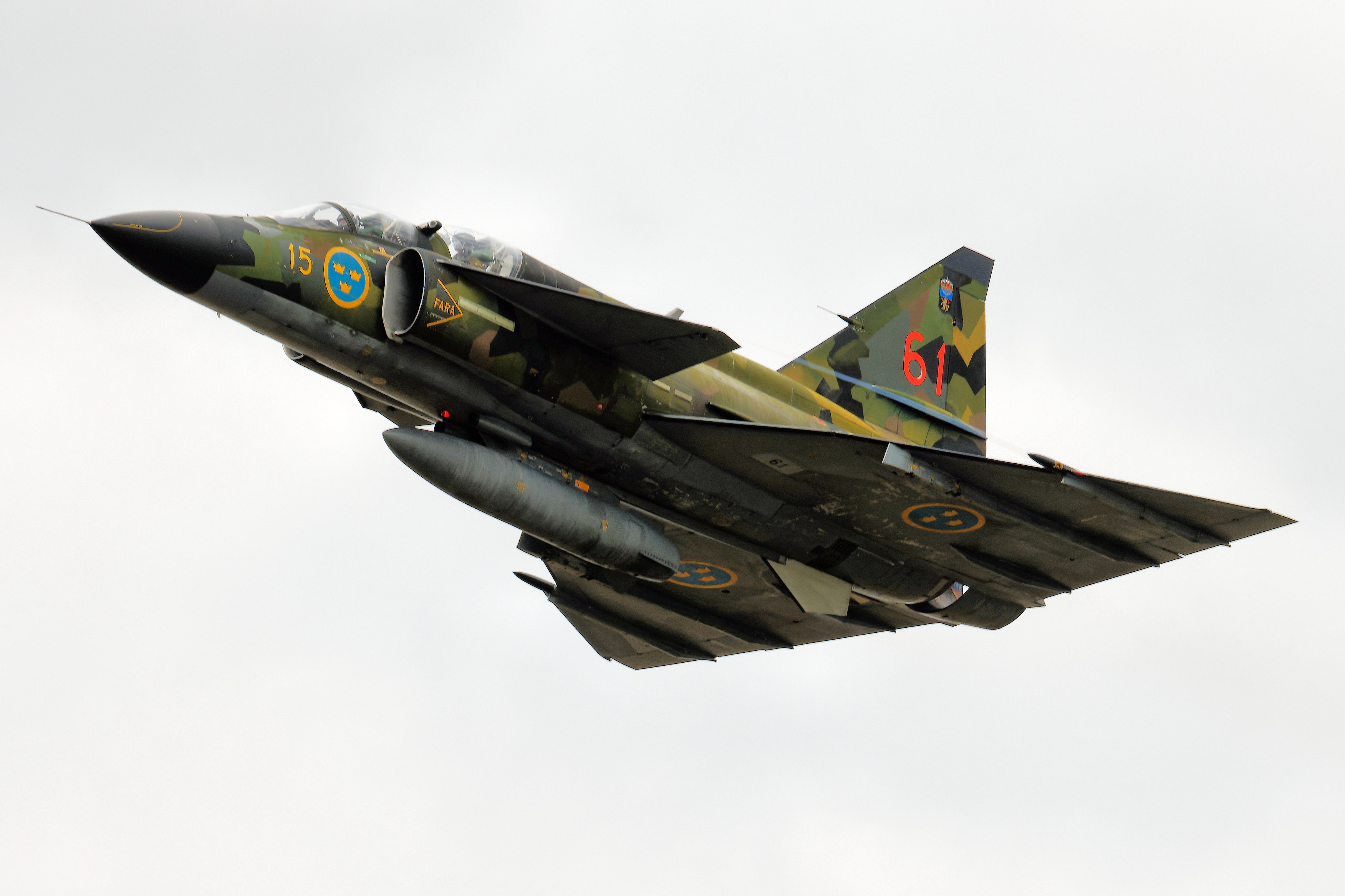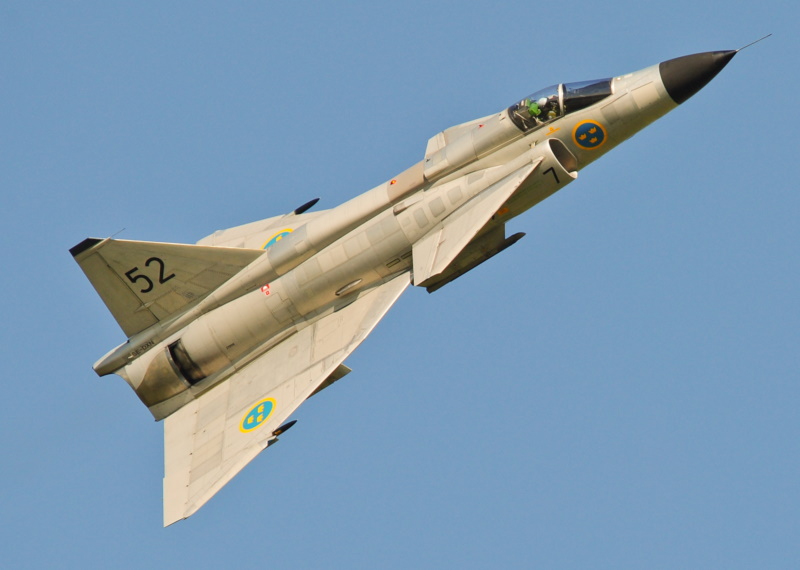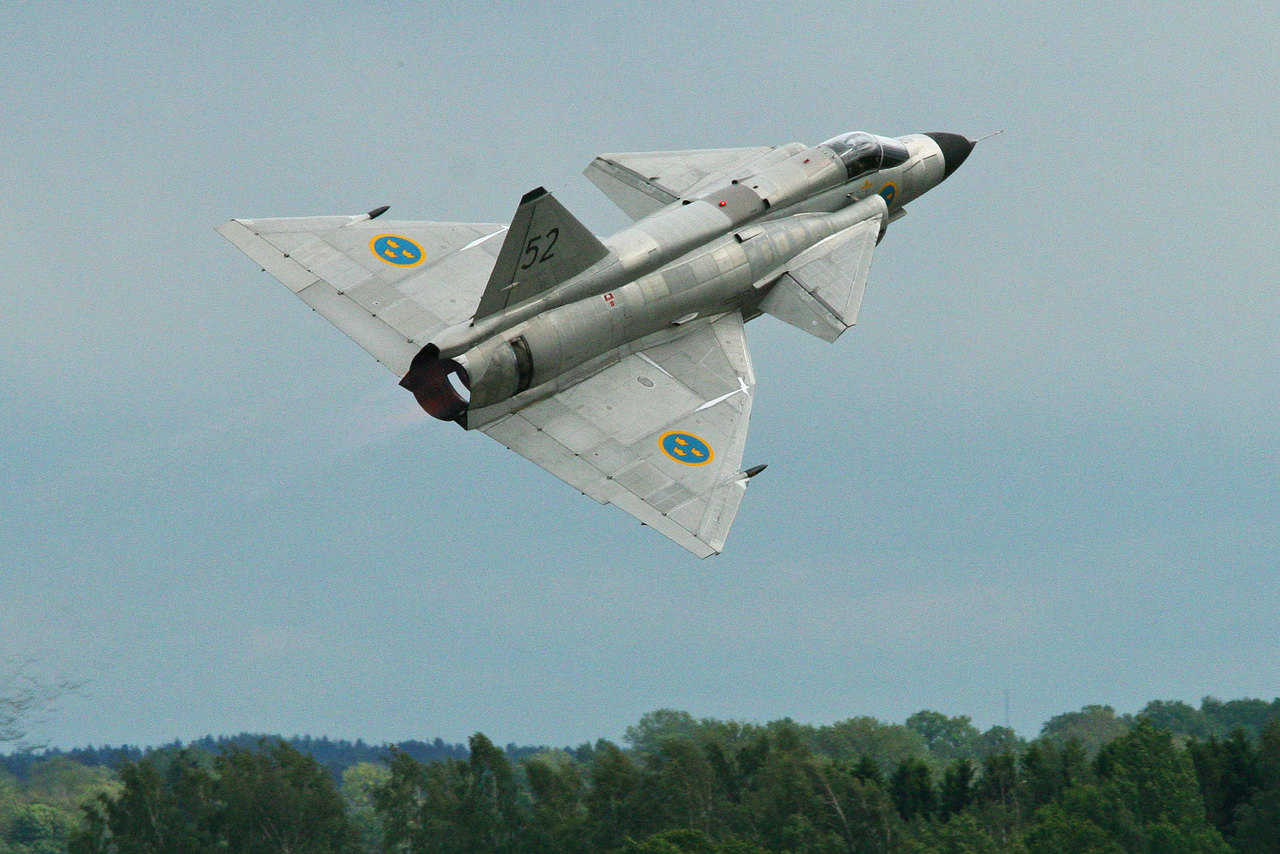
In the era of the Cold War, military aviation underwent remarkable advancements and innovations. Among the notable aircraft that emerged during this period, the Saab 37 Viggen stands out as a true Swedish marvel, embodying cutting-edge technology, unique design, and exceptional performance. The Viggen, which translates to “Thunderbolt” in English, was a multi-role fighter jet that served as the backbone of the Swedish Air Force for several decades.

The Saab 37 Viggen, designed and manufactured by Saab AB, first took to the skies in 1967. Its design was revolutionary for its time, characterized by a delta wing configuration, canard foreplanes, and a distinctive “double-delta” shape. The aircraft’s canards provided exceptional maneuverability and stability at high speeds, while its delta wing design allowed for efficient supersonic flight and short takeoff and landing capabilities.
One of the most innovative features of the Viggen was its use of thrust reversers, allowing it to take off from short runways and land on highways or makeshift airstrips, enhancing its operational flexibility. Additionally, the Viggen was equipped with a sophisticated avionics suite, including radar and electronic countermeasures, making it a formidable opponent in the electronic warfare domain.

The Viggen was a true multi-role aircraft, capable of performing a range of missions including air superiority, ground attack, reconnaissance, and anti-ship operations. Its versatility was largely due to its ability to carry a wide array of weaponry, such as air-to-air missiles, anti-ship missiles, precision-guided munitions, and various types of bombs. This adaptability made the Viggen a valuable asset to the Swedish Air Force during its service.

Viggen was a crucial component of Sweden’s defense strategy, serving as a deterrent against potential aggressors. With its advanced capabilities, the aircraft patrolled Sweden’s skies, safeguarding its airspace and contributing to the country’s security.
The Saab 37 Viggen had a lasting impact on aviation design and technology. Its innovative features, such as the delta wing configuration and thrust reversers, influenced subsequent aircraft designs, both military and civilian. The aircraft’s success demonstrated Sweden’s prowess in aerospace engineering and its ability to develop sophisticated systems independently.

The Saab 37 Viggen remains an iconic representation of Swedish engineering excellence and innovation during the Cold War era. Its unique design, advanced capabilities, and versatility allowed it to play a pivotal role in safeguarding Sweden’s security. As a pioneering multi-role aircraft, the Viggen’s legacy lives on in the realm of aviation design and serves as a reminder of the remarkable achievements of the past.